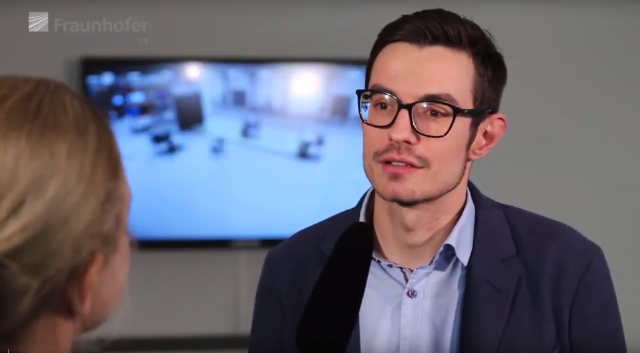5G – the communications whizz
We all know the feeling. A run-down battery, a poor Internet connection or sluggish download speeds can render a smartphone effectively useless. This raises an important question: How is wireless connectivity supposed to work in much more sensitive applications such as machine control and autonomous driving if our more modest everyday uses already push wireless networks to their limits?
No global, universal communication without a standard
With the arrival of 5G, we have a mobile communications standard that can do more: global in scope, very reliable and with very low latency, it will enable safety-critical applications such as autonomous driving. It is so extremely energy-efficient that sensor nodes can run on a single battery for years; it is so fast that machines can be controlled in real time; and it is so precise that users can exactly locate connected objects at any time.
Intensive work is underway to implement 5G, particularly within the 3GPP (3rd Generation Partnership Project) standards organization. This is where all the various strands relating to defining and adopting the 5G standard come together. In technical working groups, various companies and research institutions discuss about the elaboration of individual aspects of the 5G specifications.
Our experts from the “Communication Systems” and “Positioning and Networks” research areas are actively involved in the development of the standard, whether through technical contributions or by participating in the respective working groups. The solutions developed as part of the standardization process are channeled into the 5G standard, which will be published in successive releases. A first draft of the 5G standard (Release 15) was adopted in June 2018. Work is now underway on Release 16, ushering in the second phase of 5G standardization.
Technology development as the basis for standardization process
Our contributions to the standardization of 5G are based on our research and development work into making wireless communication faster, more reliable and more energy-efficient and into making positioning more precise. To achieve this, we are working closely with partners in various vertical industries and know both their requirements and the capabilities and limitations of current technologies. This results in technical procedures and solution concepts that we can introduce into the 3GPP working groups in the form of suggestions.
Our technical solutions are geared toward various areas of application: For mobile broadband communications, we develop technologies such as multiple antenna systems and distributed antennas for increasing capacity and throughput. In the domains of Industrie 4.0 and connec- ted mobility, the focus of development activities is on ultra low latency and precise localization and positioning. For the massive connectivity of objects in the Internet of Things, by contrast, the main thrust of research work is aimed at lowering power consumption through particularly energy-efficient transmission techniques. In addition, we are working on concepts for the inte- gration of satellites into the wireless network, which has the potential to significantly improve complete worldwide network coverage.
Our technology development brings together various kinds of expertise: Development work on communication and localization technologies begins with the application-oriented system design, in which the functional concept of a transmission or localization solution is worked out. Then comes the practical realization. That is to say, we translate the solutions into initial hardware and software prototypes in order to test whether the technologies deliver the desired performance. This requires realistic test environments, which we have developed here at the institute.
»Contributions to the standardisation of 5G are based on our research and development work.«
Testing and implementing 5G applications
Test environments are central to the tasks that will have to be accomplished even after publica- tion of the 5G standard. Companies have to develop planned products and applications based on the latest mobile communication technologies that are not yet supported by the existing wi- reless networks. Although initial commercial 5G networks are expected as early as 2020, it may well take three to four years between the definition of new 5G functions and their general availability. In this period, the testing and development of future-proof communication applica- tions will be very difficult without suitable test facilities.
With the “5G Bavaria” initiative, we offer companies and other research institutions the oppor- tunity to test their 5G applications in advance. In the test center at Fraunhofer IIS in Erlangen, for example, we look after the development, maintenance and provision of test environments for simulations in the laboratory. With the installation of test beds, we also create application- specific test environments, such as for Industrie 4.0 applications in Nuremberg. They incorpo- rate real infrastructure to implement initial 5G applications on a small scale – so that 5G can take up residence in buildings, factories and vehicles as soon as possible.
5G Bavaria - expert talk with Karin Loidl and Marco Steglich

